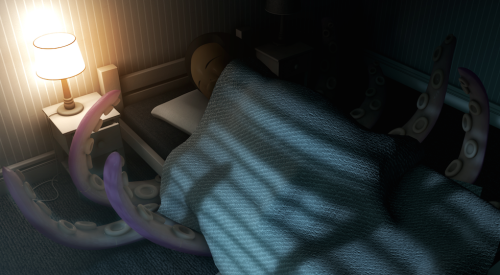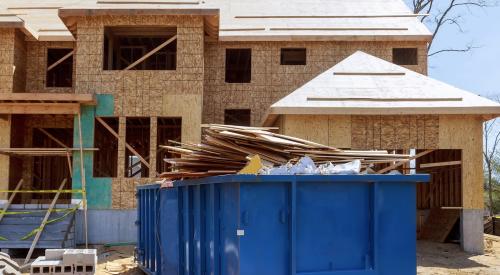Awhile back I was riding my mountain bike on one of the many beautiful trails we have here in Michigan, one I had trekked many times and on which I knew what was around every corner. My confidence was high and so was my speed.
Because I was so comfortable, I let my guard down for a split second and quickly found myself laying in a pile of leaves, and likely some poison ivy. I realized I had barely clipped a tree with my handlebars. As I picked myself up and dusted off, I noticed pain in my left forefinger. I shook it off and kept riding.
Weeks later, my finger still hurt. The pain wasn’t bad; more like an annoyance. I kept ignoring it. With a super busy schedule at work, I really didn’t have time to go see any doctors, and besides, what would they do? Nothing looked broken, so I assumed it would feel better over time.
Months later, I still had occasional pain in that finger. The pain level never really improved or got worse, so I just got used to it and pushed through it … until finally I went to a doctor. A couple of x-rays later, I was told I had fractured a bone at the knuckle closest to my palm. I kept making it flare up by doing everyday things. The fix was simple: The doc gave me a finger immobilizer I could remove easily, as necessary. It was a minor inconvenience for a couple of weeks, but in the end, I was able to get rid of the pain completely.
If It Ain’t Broke …
You’re probably asking yourself how my finger injury relates to home building. It’s simple: We work in an industry that’s too busy for change. Builders suffer pains day in and day out without knowing it, under the guise of “if it ain’t broke, don’t fix it.”
For example,I was working with a production builder in the Midwest. We had developed a package consisting of several house plans with multiple front elevations and structural options. Each plan package had more than 150 pages.
The builder’s team had been relying on its field managers to redline each plan set for the trades, using red markers to circle things that applied and cross out things that didn’t, and then turning that 150-plus page set over to their trades to use for their particular discipline.
We work in an industry that’s too busy for change. Builders suffer pains day in and day out without knowing it, under the guise of “if it ain’t broke, don’t fix it.”
We had offered an additional service to this builder that consisted of a small fee and quick turnaround time to produce a lot-specific plan set for every house, but the client respectfully declined because they felt they could save time and money by redlining the plans as they’d always done. To them, that system wasn’t broken … so, why fix it?
Months later, I got a call from one of that builder’s field managers. He was steaming mad because he ordered a prefabricated custom metal stair rail based on the set of redlined plans. The plans showed 16 risers, but there were only 15 built in the field. He had already taken the time to check measurements and noted that there wasn’t enough room to fit a 16th riser, therefore, the plans must be wrong. He’d now have to order another railing to the tune of over $3,000 and wait eight weeks for delivery, pushing the closing date back considerably.
Of course, I wanted to get to the bottom of the issue before it happened again. I asked the field manager to send me the set of working plans for the house, and I pored over the 150-plus-page set trying to find the mistake.
Because of all of the redlines, it took me an entire day to understand what happened: One of the structural options had widened the main entrance hall by just a few inches. Doing so meant there wasn’t enough room for 16 risers in the staircase so, for this option, the riser count had been reduced to 15.
RELATED
- Why You Need a Backup Plan for a Housing Market in Flux
- 8 Ways to Improve the Product Reselection Experience for Customers
- Housing's Incremental Innovation Path
The option was circled on the plans to be included with this build, but somewhere down the line there was a breakdown in communication. The framing was correct, but whoever ordered the railing did so off the base (unmarked) plan set that showed 16 risers.
I broke the news to the field manager. He apologized for getting upset at me, but not before another field manager on a different project ran into the same problem. This time, their buyer was in a time crunch due to having to be relocated for a job. Ultimately, this buyer backed out of the purchase because they had to push the closing date back nearly six weeks due to the mistake. That buyer ended up buying an available spec home from another builder. Not only did that push the cost of the mistake far beyond $3,000, but it also left a stain on the builder’s reputation.
Ways to Avoid Costly Mistakes
Weeks later, I was explaining to the client’s building team, again, how our team could help them avoid such mistakes. I asked them to imagine working from a set of plans drawn specifically for each home and getting that set of plans at low cost in a quick turnaround time. No more redlining plans, and no more confusion in the field. With less time spent marking up plans, and fewer field mistakes and wasted trips, I bet the builder would not only be more profitable but their trades would be a lot happier, too.
There was an added bonus: By using this new technology to quickly and efficiently tailor a set of plans to a particular lot, we’re able to provide the builder with an accurate material list, labor cost, purchase order creation, and extensive marketing tools that could help improve their customers’ experience and increase sales. And all of these benefits and outcomes came at no additional cost in architectural fees. Imagine what it could do for the bottom line.
It is true that we often keep doing the same things over and over because they work … at least well enough. We think we know what’s around every corner because we’ve been on the same trail or journey several times. We get comfortable and try to pick up the speed to grow our business, so we’re too busy to try a different approach.
Eventually, though, we let our guard down and end up on our backs, with a fractured finger, in a sea of poison ivy, or with a dissatisfied customer and a lost sale. Then, we keep pushing through the pain until we finally realize we need to try something new and that the fix may be simple. It may cost a little more time, effort, and money on the front end, but it could be well worth the investment.
These days, architects have many more tools at their fingertips than ever before. Ask your architect how the latest technology can help you grow your business. If they can’t help you, maybe you need to find a new design partner.

Eric Tiffin, AIA, is the production director at TK Design & Associates, in South Lyon, Mich.













